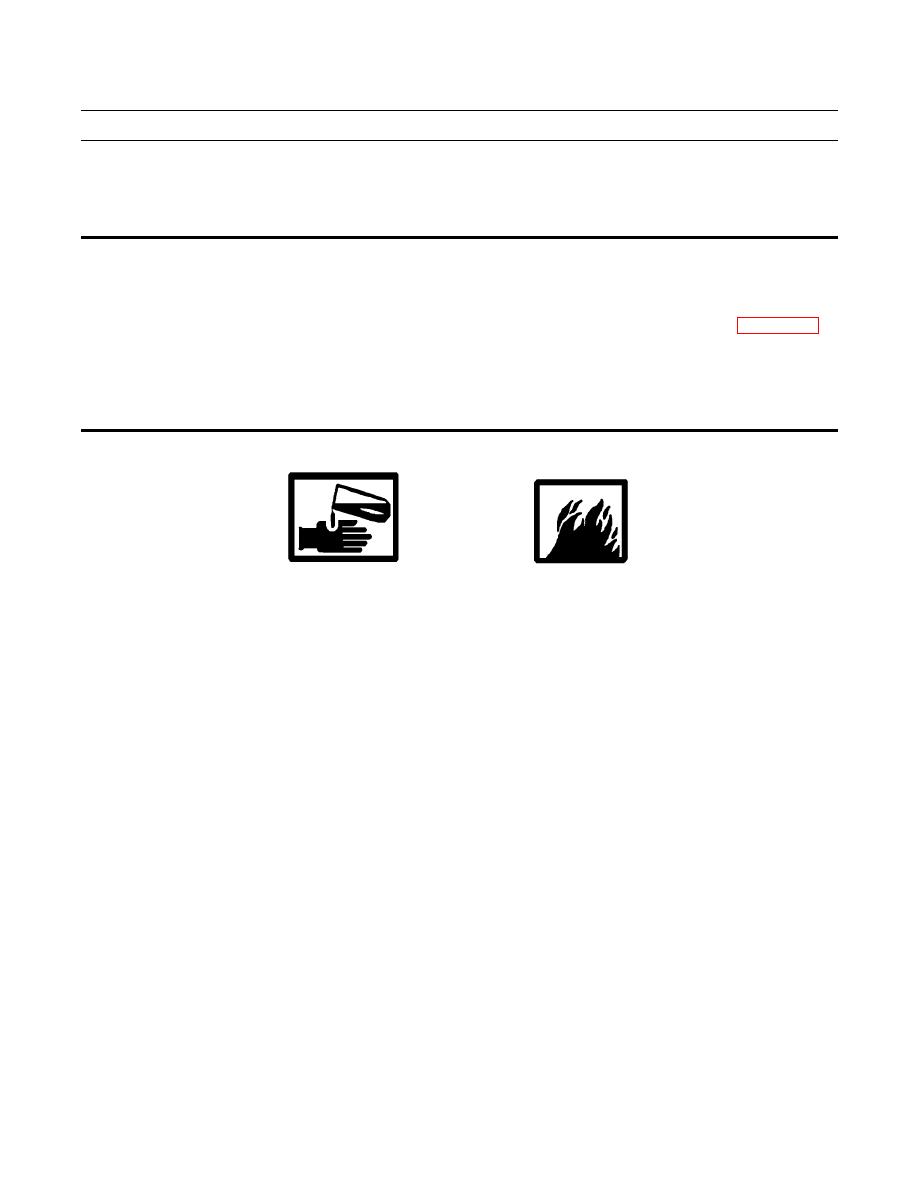 |
|||
|
|
|||
|
Page Title:
AIR CONDITIONING (AC) SYSTEM INSPECTION AND LEAK TEST |
|
||
| ||||||||||
|
|
 TM 9-2320-312-24-1
AIR CONDITIONING (AC) SYSTEM INSPECTION AND LEAK TEST
THIS WORK PACKAGE COVERS
Inspection, Leak Test
INITIAL SETUP
Maintenance Level
Tools and Special Tools
Unit
Leak detector, refrigerant (Item 20, WP 0166 00)
MAC Reference
Equipment Condition
Group 140
Cab tilted (TM 9-2320-312-10)
WARNING
Liquid refrigerant, when exposed to air, quickly evaporates and will freeze skin or eye tissue. Use care
to prevent refrigerant from touching your skin or eyes. Serious injury or blindness may result if you
come in contact with liquid refrigerant.
Refrigerant R-134a air conditioning systems should not be leak tested with compressed air. Combusti-
ble mixtures of R-134a and air may form, resulting in fire or explosion. Failure to follow this warning
may result in injury to personnel.
INSPECTION
NOTE
Refrigerant is odorless. It may leak away and not be noticed until air conditioning system stops cooling.
All vehicle refrigerant systems lose some refrigerant depending on the condition of the system. High
loss rates indicate a need to locate and repair the source of leak.
Leaks are most often found at hose connections to the compressor and at fittings and joints. Refrigerant
can be lost through hose permeation if unapproved replacement hoses are installed.
1.
Inspect air conditioning system for lubricant leakage, corrosion, and damage to hoses and components.
2.
Inspect the lowest point of hoses and fittings for lubricant leakage that may collect and indicate a leak above.
LEAK TEST
1.
Use a leak detector, in accordance with manufacturer's instruction manual, to check for leaks at hose connections, fit-
tings, and air conditioning components. If leaks are found, notify Direct Support Maintenance.
2.
If no leaks are found, lower cab (TM 9-2320-312-10).
END OF WORK PACKAGE
|
|
Privacy Statement - Press Release - Copyright Information. - Contact Us |